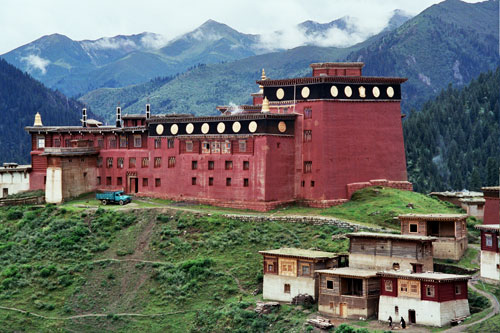Palpung Monastic College
Sponsored from 2004 through 2014. Support for two hundred monks.
The eighth Tai Situpa, Chökyi Jungné (1700-1774), founded Palpung Monastery (“Mound of Glory”), a Kagyu monastery, in 1727. For more than one hundred and fifty years, Palpung’s life centered mainly on meditation practice: two three-year, three-month retreat centers thrived on the slopes high above the monastery’s main buildings. Tashi Özer, one of Jamgön Kongtrul’s closest disciples who had graduated from Palpung’s Tsa’draRinchen Drak retreat center, advised his disciple, the eleventh Tai Situpa, Péma Wangchuk Gyalpo (1886-1952), to learn the main thirteen basic Buddhist textbooks of Indian origin under the guidance of Khenpo Zhenga (1871-1927). It was during Khenpo Zhenga’s residence at Palpung that the monastic college was founded, and that Tai Situpa asked his teacher to write what has become his seminal work—interlinear commentaries to all thirteen textbooks, commentaries still studied in monastic colleges throughout eastern Tibet.
Tsadra Foundation has given the Palpung Monastic College a three-year grant supporting the director (khenchen), four instructors (khenpos), and 100 students for the period 2004-2007. For the period 2007-2010 the Monastic College is receiving a grant supporting four instructors (khenpos), six teachers (gegens), two assistants, and 200 students. Since 2012 the Monastic College has continued to receive partial support for its operations.


